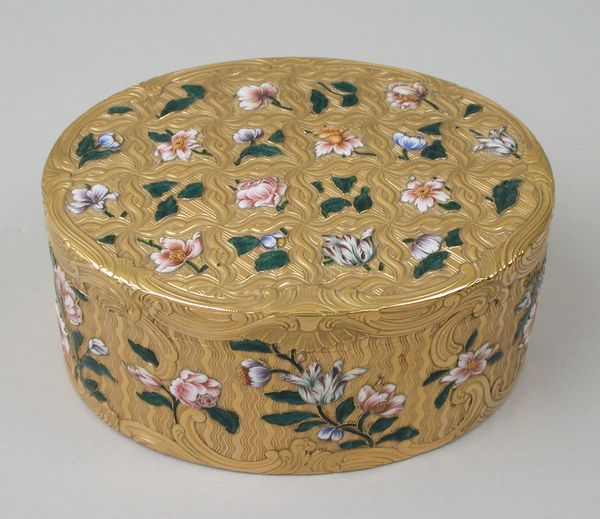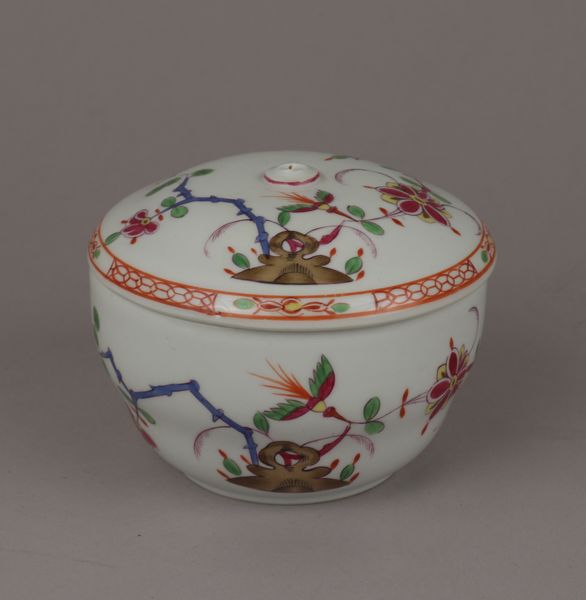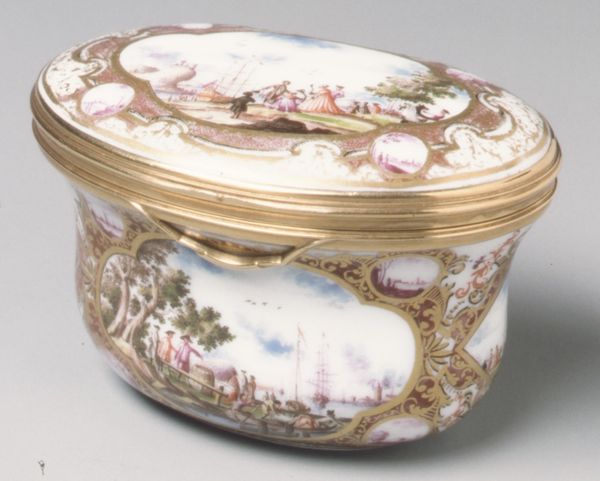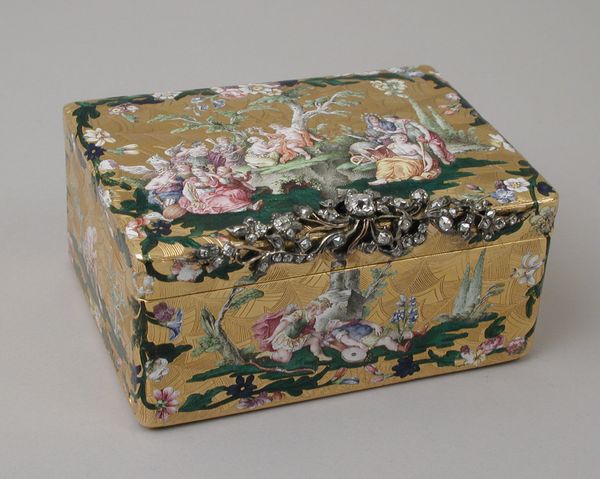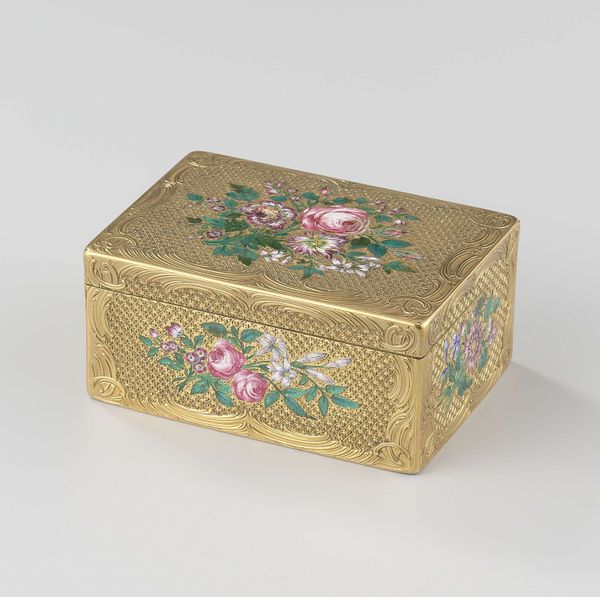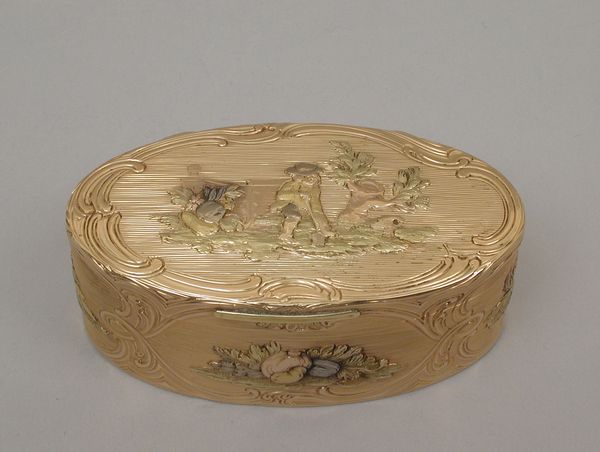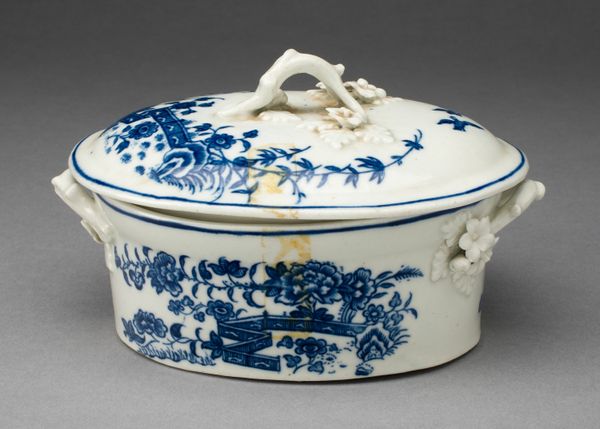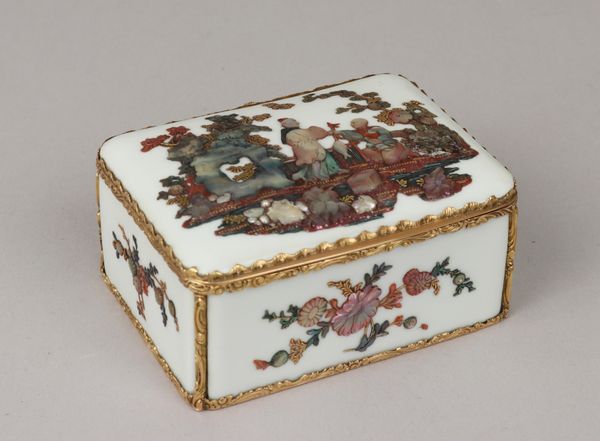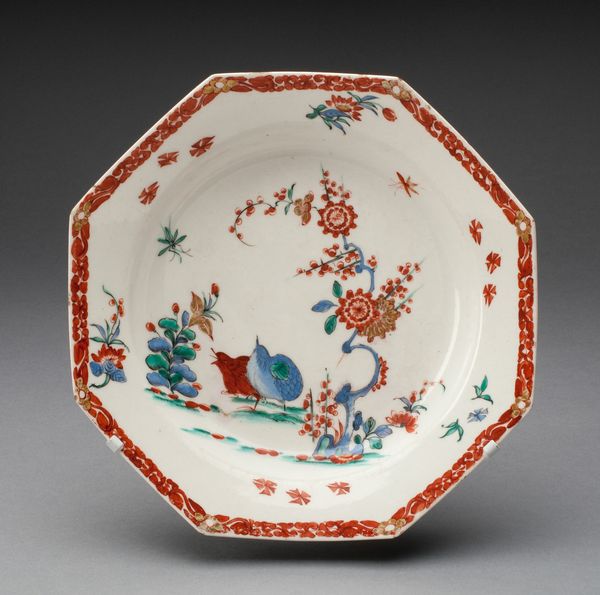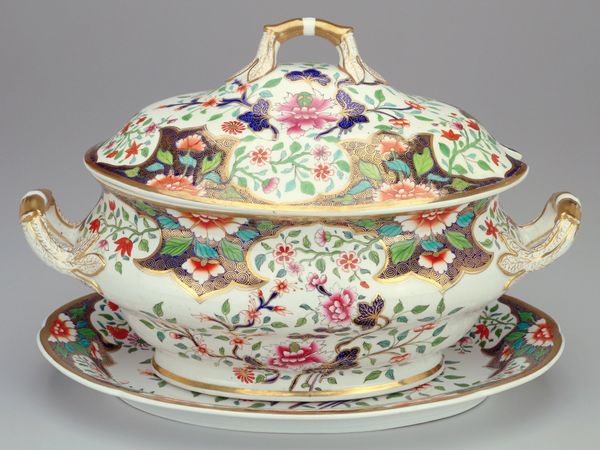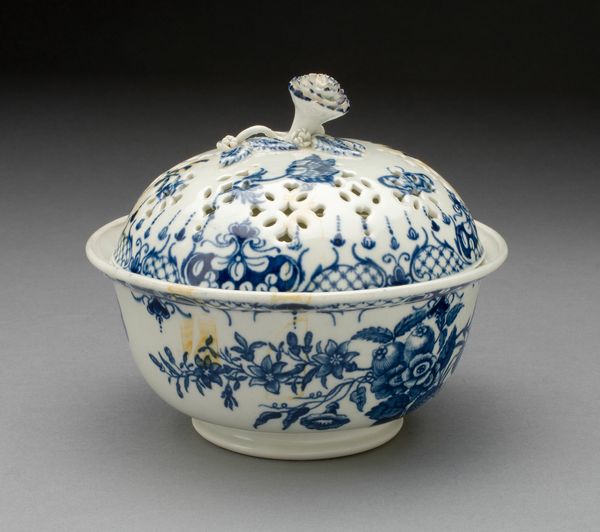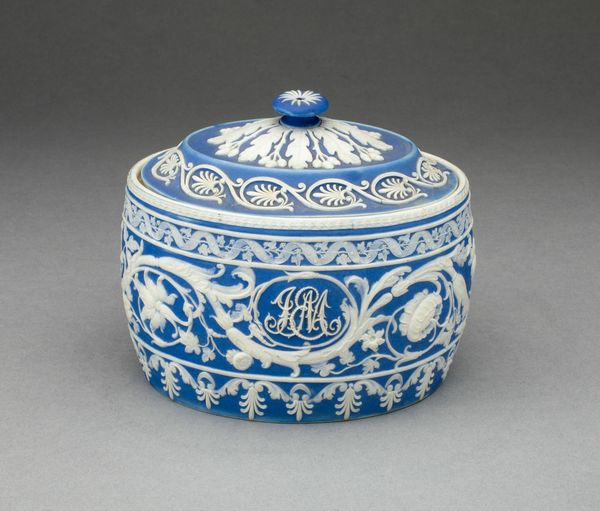
ceramic, guilding, sculpture
#
decorative element
#
ceramic
#
jewelry design
#
guilding
#
sculpture
#
ceramic
#
decorative-art
#
rococo
Dimensions: Overall: 1 11/16 × 3 3/8 in. (4.3 × 8.6 cm)
Copyright: Public Domain
Curator: Oh, my goodness, this Snuffbox just vibrates with light. It feels as though all the secrets whispered over snuff have sunk into its very being. Editor: Well, indeed. Crafted between 1751 and 1752 by Jean-François Garand, this little rococo treasure here at the Metropolitan Museum, epitomizes luxury and speaks volumes about 18th-century social rituals and material production. It's made of ceramic and is heavily gilded, reflecting status through consumption. Curator: I adore that you immediately went to consumption, because it IS indulgent, isn't it? All that delicate, painterly floral decoration on what is, after all, a box for *snuff.* What emotions were swirling as those tiny flowers were added? What was the artisan thinking about, in that quiet intensity? Editor: My attention goes directly to the amount of labor involved in creating something so ornamented from what basically started as humble clay. Every decorative element represents hours of labor, from the initial modeling and firing to the meticulously applied gilding. This wasn't just an object; it was a product of complex socio-economic systems that linked ceramic workshops, guilds, and aristocratic consumers. Curator: So much gilding; what must that labor have felt like for the artist's fingers? Is there pride, exhaustion, or even a sense of becoming as ornamented as the piece itself? I wonder if they imagined their touch persisting across the centuries? It does have a feeling of the artist lingering. Editor: The materiality tells such an interesting story of trade networks and economic power—the guilds would be so meticulously crafting things to be traded all over the world. Considering that, even this beautiful snuff box can be considered both high art and the product of global commerce. Curator: It gives me an almost visceral reaction to the hands that once held it. What do you feel you now understand differently, having really explored it again like this? Editor: Its opulence highlights the stark social inequalities of its time. And you? Curator: Well, now when I look at it, I'll remember it represents stories: the consumers and also, of course, the craftspeople, and now our own.
Comments
No comments
Be the first to comment and join the conversation on the ultimate creative platform.
